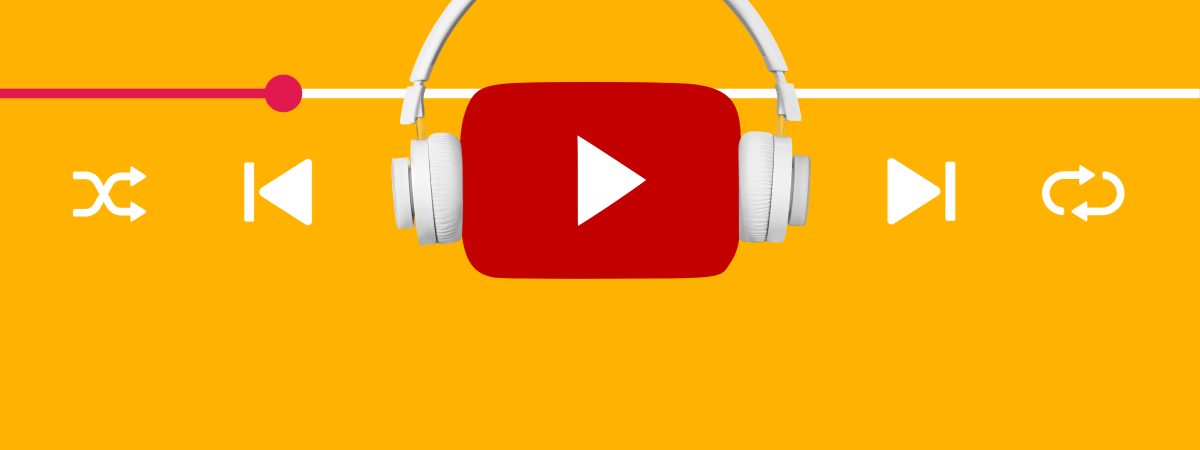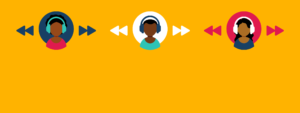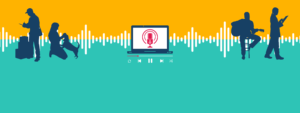Video podcasts, and YouTube more specifically, remain controversial in podcasting it seems, especially among some industry veterans. The caution and skepticism is understandable, given Google’s market power and tendency to move unilaterally and sometimes unpredictably.
That said, I think YouTube’s influence will bring more eyes and ears to podcasts in 2024. And that’s a good thing. I write this not as a partisan or promoter of YouTube, but based upon an analysis of evidence in front of us.
As of last fall YouTube remains the most used podcast platform, according to the Cumulus Media / Signal Hill Insights Podcast Download Fall 2023 Report. The platform rules for discovery, too, ranking as the top way podcast consumers find their podcasts in The Podcast Landscape study that we conducted with Sounds Profitable. Simply put, all evidence is that YouTube has been driving growth for the medium. That will continue this year, and likely accelerate.
YouTube Has Now Made It Easier for Podcasters
YouTube just rolled out direct ingestion of audio-only episodes from RSS feeds, simplifying the process for any podcaster wanting to get their show there. This amplifies the opportunity and levels the playing field for many more podcasters.
Now, episodes uploaded this way feature only a static image and audio, and there’s been debate about how much incremental audience this strategy generates. From Sounds Profitable’s Sound You Can See study, we know that only about a fifth of video podcast consumers watched one that only featured a static image or thumbnail. Moreover, when we asked what they prefer to see, the overwhelming answer from 70% of respondents was “hosts/creators and/or guests together in a studio.” Only 7% said they prefer a static image.
There’s a Desirable Audience for Audio-Only Podcasts on YouTube
While YouTube podcast consumers generally favor video pods, The Daily from The New York Times ranked in the top 10 favorite video podcasts in Sound You Can See, and its YouTube visual is nothing more than static show art. This indicates that good audio content remains a top draw, and the lack of full live video is not an instant demerit. As we learned in the Fall Download study, video podcast consumers spend 40% of their YouTube podcast time listening to the audio without watching.
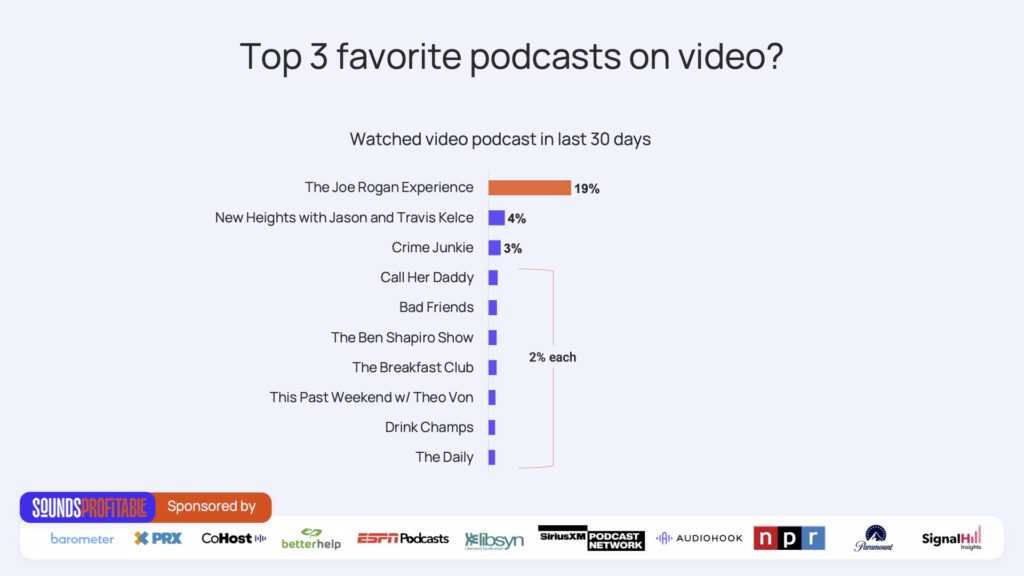
When we focus on the age segment driving the most audience growth, the preference for just listening to video podcasts goes up. A full half of young adults aged 18-34 prefer video in the background, concentrating on the audio. That group comprises the largest age bracket (41%) of weekly podcast consumers, and is an even larger share (50%) of new consumers who started listening to podcasts in the last year. They’re also most leaned into discovery – 61% started a new podcast in the past three months.
Having a podcast on YouTube with just a static image is well suited to having the video minimized or in the background. Also, as more podcasters take advantage of the RSS ingestion feature and this kind of video podcast becomes more common, overall consumer habits and attitudes are likely to adapt.
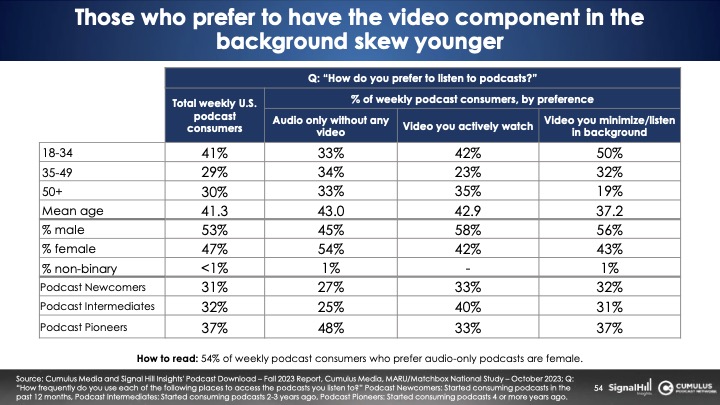
Any incremental audience growth is better than no audience growth. So the easier it is to put podcasts on YouTube, the more it becomes a no brainer to just do it. It’s difficult to see many downsides. Then, a podcaster can up their game as they see fit, noting that the choice is not a simple binary between full live video episodes or static images.
Despite Challenges, YouTube Is a Good Environment for Podcast Ads
At the same time, YouTube presents some challenges around monetization. First, a YouTube view is not counted as a download by a podcast’s hosting platform, though major hosts have been integrating YouTube metrics into their dashboards.
The bigger challenge is that YouTube’s policies prohibit the use of dynamic ad insertion in the content uploaded to the platform. Only baked-in ads are permitted. It’s more of a speed bump than a roadblock, but clearly not ideal for anyone who uses DAI.
One consolation is that YouTube podcast consumers have a positive opinion about these baked-in ads. According to the Sound You Can See study, the top descriptors they select are “informative” (33%), “interesting” (26%) and “relevant” (25%). Only a fifth choose a negative “disruptive” or “annoying.” Even 51% of YouTube Premium subscribers, who don’t receive YouTube’s native ads, say they don’t mind the baked-in ads, and more than a third (35%) say they like them.
The longstanding positive audience receptivity to podcast ads stands strong in the emerging video era.
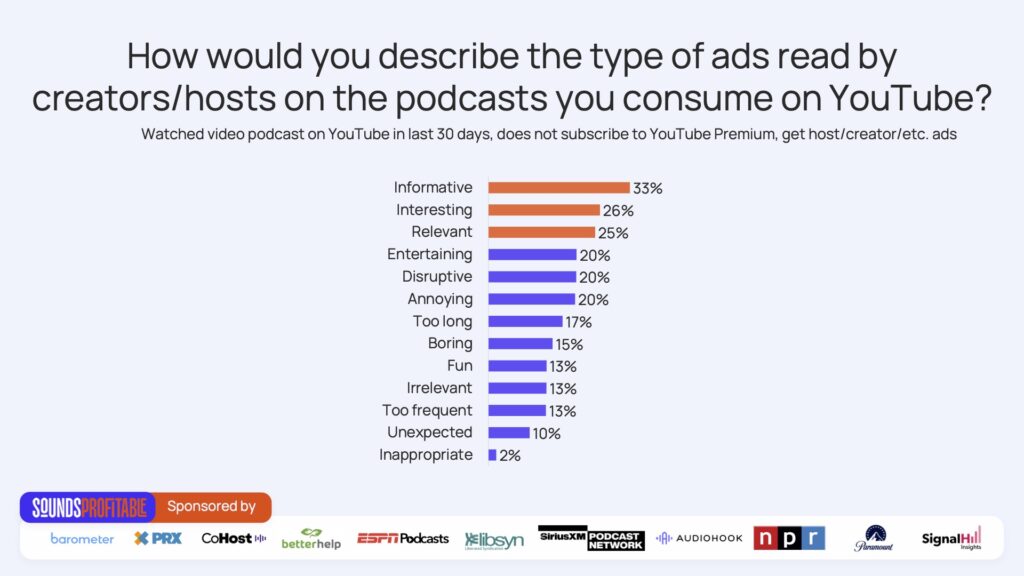
Only Change Is Certain, but Audio Persists
I get it, change can be disconcerting, and this shift towards video and YouTube is a pretty big change, even if the signs have been getting clearer the last couple of years. YouTube choosing to embrace podcasting more fully definitely adds fuel to the fire.
Taking a step back, podcasting has been in a constant state of change. When I started in the industry a decade ago we only had baked-in ads, there was no attribution, pretty much no scalable brand lift, and otherwise very limited measurement overall. Still, video podcasts weren’t even new then. Earwolf had been posting full video episodes to YouTube in conjunction with a channel called the Video Podcast Network as far back as 2013, while Apple’s iTunes added video podcast support in the Bronze Era of 2005.
While I see YouTube growing the medium, I’m not predicting death to podcasts that don’t jump on the video train this year. But the cost to experiment will go down, as the incentive to do so goes up.
The growth of video is not the decline of audio – video podcast watchers don’t only use YouTube, and they do consume audio-only. The podcast pie is still growing overall, which means bigger slices for audio and video. The unique opportunity offered by podcasts is in fact their ability to reach the audience wherever they are.
